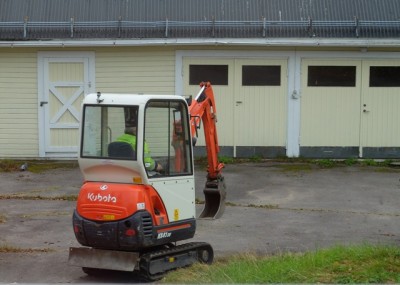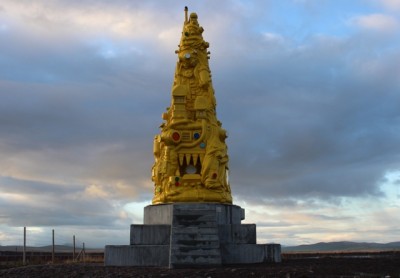They came back, those men with the digger. They first came one day when we were out, and our neighbour told us about it when we returned. Something to do with the telegraph pole in the garden at the bottom of ours. There were problems with our neighbours’ phone lines, so as it was in a good cause we tried not to be too bothered by the churned up grass we’d been left with.
Then two days later two white vans swished passed our kitchen window and parked on our driveway at the bottom of the garden. Two men got out and didn’t even look in our direction. It was a surprising invasion – we at least expected someone to ask us if it was ok.
When challenged they acknowledged that perhaps they should have done that. There was no machinery access to the telegraph pole in the neighbour’s garden, they said, so ours was the only route. They muttered darkly about the possible need to dig up our garden to install a new cable. Then they brought in their digger again.

It glided down our driveway like a Dalek with evil intent. There didn’t seem to be much we could do.
Later in the day we noticed the Dalek was still there but the men weren’t. They’d gone home for the day and abandoned the Dalek. So we rang and demanded they remove it, which, reluctantly, they did, threatening to return with it the following day.
That night it occurred to us that no-one should have the right to dig up your land without your permission, unless that permission has been granted with the deeds of the house. A quick check on the internet showed that no such permission had been granted. We needed to find out what was supposed to happen, according to the law, and then we’d be willing to try and help them find a solution, but before then we didn’t want them in our garden.
So began the resistance. We shut the gate to our driveway, put on our black berets and waited. We slept badly, imagining an early morning incursion to catch us unprepared. As it happened we were ready and waiting at 8am when they appeared. They concealed their arrival by parking their vehicle out of sight, and began their approach from the other neighbour’s garden to one side. We watched from the window. Then, they nipped over into the garden where the pole was and started digging, with spades. So, no Dalek required then.
But our victory was shortlived. Of course – now our phone doesn’t work.


 …
…